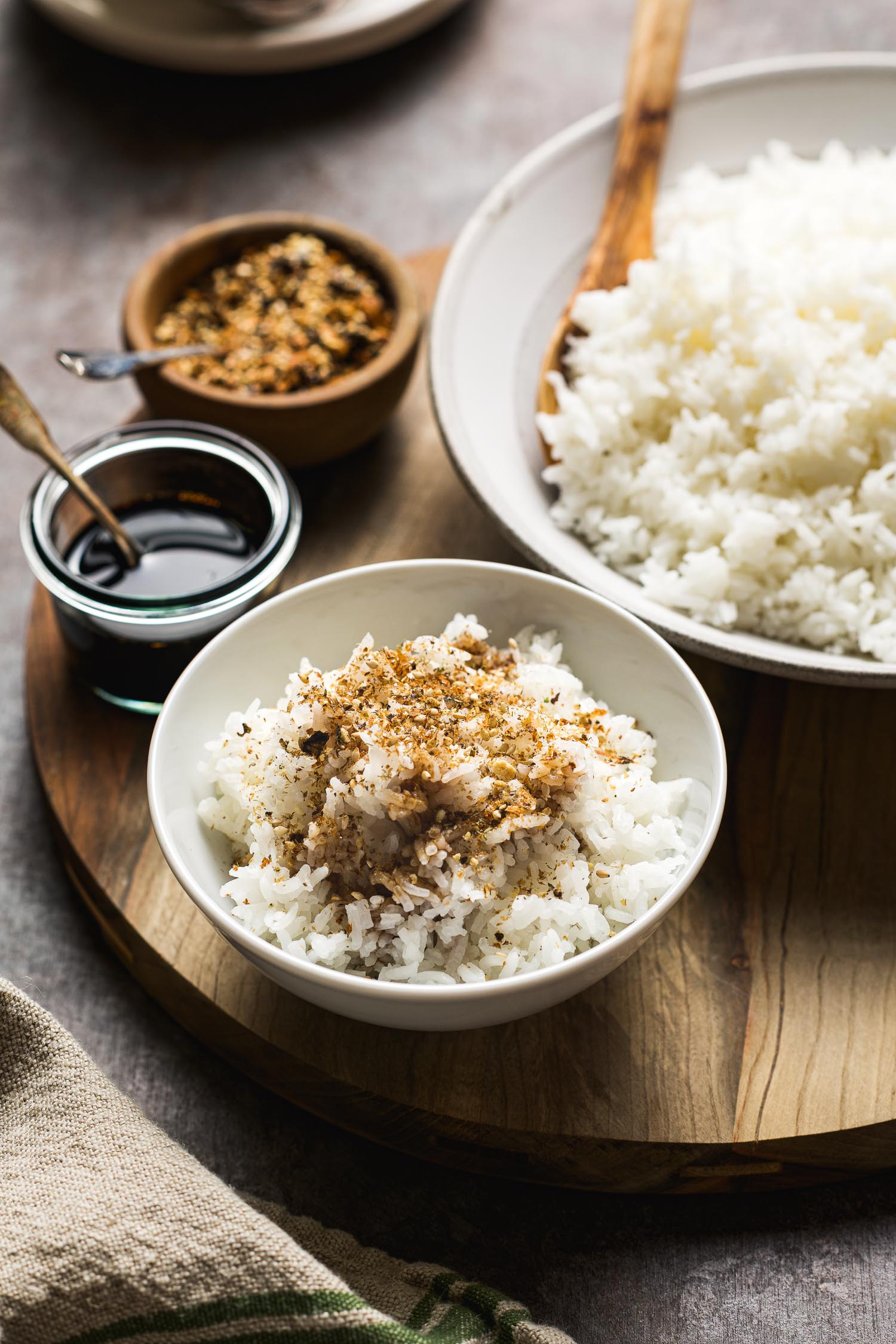Foolproof Stovetop Rice
You don’t need a rice cooker to cook perfect rice each time–here’s how to do it.

This year I made a personal commitment to try things outside of my comfort zone. Maybe reaching a milestone age some months ago has given me a new perspective on the [quick] passing of time but I resolved to no longer make excuses not to attempt something because of 1. overthinking things to death, 2. for being an introvert, 3. for being shy. I thought I had outgrown the latter by my senior year in college but I still experience the power of its clutches from time to time.
One way I’ve decided to combat these stumbling blocks is to take baby steps with recording videos for my recipes. Recording the cooking process and then editing the videos required an entirely new set of skills that seemed so daunting but I managed my first one two weeks ago, making me feel quite accomplished! It wasn’t as bad as I had imagined. I even put myself in front of the camera which could be near the top out of all my fears. But I haven’t given myself a speaking role in my minute-long reels just yet. Like I said, baby steps.

This guide for preparing rice on the stove top is intended as an accompaniment to my second video (shared on Instagram) on how to prepare rice on the stovetop. Just like with the first, demonstrating how easy it is to make almond butter at home, I’ve kept to single- or two-ingredient recipes to allow me to focus on the technical aspects of video.
But I continue to come across, in various cooking forums, people who struggle to cook rice at home. The common problems are overcooked or mushy rice or just simply not getting consistent results. There are already numerous guides addressing these issues but hopefully this post (and my video) will be someone’s aha moment one day.
How to Cook Rice Perfectly on the Stovetop Every Time.
There is a trick among those in-the-know that is sometimes called the finger joint method of cooking rice. All you have to do is put the amount of rice you want to cook in a pot–I use sauce pans with lids ranging from 1 1/2 to 3 quarts–level the rice after rinsing and draining it then rest the tip of your finger on top of the rice, filling the pot with water up to your first crease (or knuckle). Cover, bring to a boil, reduce heat to simmer and you will have perfectly cooked rice in ten to fifteen minutes (for white rice).
This method doesn’t require you to know if the brand of rice you use calls for a 2:1 or 1.5:1 or other ratio water to rice. It’s very flexible and forgiving and works for white rice, brown rice, black rice or red rice. It’s not advisable for instant rice, though. Of course, cook time will vary with the rice variety but generally, white rice cooks in about 15 minutes and the whole grain rice a little longer. Depending on the texture you prefer for your rice, for the whole grain variety, you can go slightly past the first crease of your finger if you prefer a softer texture. My husband likes a bite to his brown rice so I don’t have to make allowances but the finger joint method removes the guessing game for how much water to add to uncooked rice–it always works.
Now I’m not saying that you should give away your rice cooker. It would still be hard to beat for a large gathering. But if you’re short on counter space and have a household of two, three or four, cooking on the stovetop is the way to go…especially now that you have this trick up your sleeve.


Foolproof Stovetop Rice
You don't need a rice cooker to cook perfect rice each time–here's how to do it.
Ingredients
- 1 1/2 cups uncooked white rice (See Note)
- water
Instructions
-
Put the uncooked rice in a saucepan, rinse twice and drain. Level the rice with your fingers, rest the tip of your finger on top of the rice and add water up to the first crease (or knuckle). Cover with a lid, bring to a boil then reduce heat to simmer. Check for doneness in 8 to 10 minutes after reducing heat to simmer. Fluff with a fork and serve.
Recipe Notes
Rice: You don’t have to measure the rice for this method but until you get the hang of it, I’m recommending 1 1/2 cups to start.










You are the best. Practical ideas for us noncooks